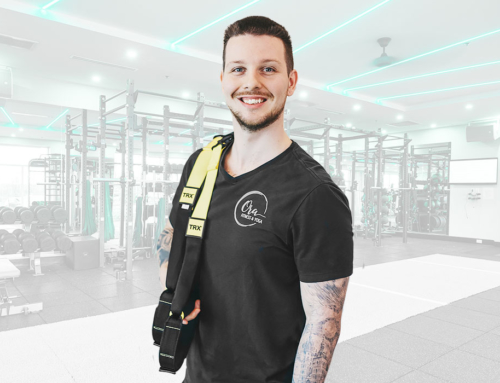“There is no such thing as specific back pain” was once said by one of the best back researchers in the industry Dr. Stuart McGill. Many times people will experience low back pain and automatically ask their trainer to diagnose them. Some may try, but you’re better off leaving it to the professionals and booking in with someone like Dr. Sarah Forster from Restore Rehabilitation.
There are a handful of myths out there that we felt like we need to tackle to clear the air for you. You might have heard it from a friend or even read it online. Let’s once and for all cut through the noise and get to the truth about low back pain.
1. Having a Powerful Back will Prevent Back Pain
Power is the product of velocity and force. Generating power in the spine is highly problematic, as it increases the risk of injury. If our spine has movement at high speed, the forces or load on it must be low to avoid injury. A great example is the golf swing as it has high velocity but little force.
Now, on the flip side if the force is placed on the spine is high, then the speed must be kept at a low level to maintain a low risk of injury. A great example of this is the fantastic deadlift! With this being said the risk of back injury could be controlled by keeping spine power low.
2. Stretching to Prevent Low Back Pain
Stretching is often considered beneficial for back pain, but this idea is an old-fashioned belief that needs to be put to rest.
There is no such thing as a stretch that is end all be all for those who suffer from back pain. Each back pain scenario is different, and to say “do this stretch and your back will feel better” is absurd. If the ultimate goal was to improve the mobility of the spine, only a therapist can prescribe specific and individual mobility exercises to help.
Physiologically, pulling your knees to your chest, or other similar stretches you’ve seen online, trigger something called the “stretch reflex.” This is a neurological phenomenon that reduces pain sensitivity. This stretch provides a brief moment of pain relief for some, making it a short-term band-aid on a gun wound. The problem is that in putting in your spine in this position, you are aggravating your discs and after you’ve experienced temporary relief, the pain will return, often worse than before.
You’ll end up in a trap of the vicious cycle of doing a couple stretches you found online, find temporary relief, pain returns, and you repeat, but never getting to the source.
3. Pilates can Cure my Back Pain
While many people out there will suggest this type of exercise because of its therapeutic properties, studies have not supported these claims and in fact, have indicated the opposite. While some poses and movements may be beneficial or feel right at the time, there are components of both exercise systems that will aggravate an individual with back conditions. Remember there is no such thing as an exercise program or specific exercise that is beneficial to every single lower back pain case.
One red flag that pops up with Pilates is that one principle is to flatten the spine and have the lower back push into the floor when lying down. This principle will eliminate the spine from its neutral position. Straightening one of the spine’s natural curves is not healthy and can trigger pain sensitivity in a person who is already sensitized.
Some people experience a false sense of relief while going through this motion because it stimulates the back’s stretch receptors just like the stretch example above.
Now, we need to continually remember that each lower back pain case is unique and different. Maybe the three examples above will not cause any harm to someone with a specific lower back case, but, with current research continually proving that for the majority of people, these will cause more harm than good.
We highly suggest seeing a chiropractor or manual therapist that specializes in low back pain cases. They will be able to diagnose the issue and give you specific recommendations on what you need to do to get out of pain. With current numbers as high, a one out of three people will experience low back pain in their life; it’s also a good idea to see a chiropractor for a tune-up or maintenance to ensure prevention of any low back episodes.









Leave A Comment